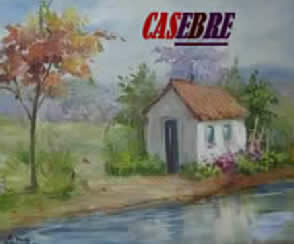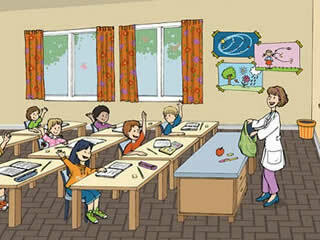In our day to day we use so many words... in speech, in writing. The interesting thing is that we are always collecting those that were not part of our vocabulary before, as in that we are talking to more experienced people, reading more about interesting subjects, the more we know the language Portuguese.
But are we ever curious to know how words are formed? Well, to make our study even more fruitful, how about we analyze the example below together?
HAIRO
HAIREIRA
HAIRUDO
DESHAIRADO
Do you remember when we studied about the structure of verbs? If not, go back a little further and access the text "Let's get to know the structures of verbs?”. You will notice quite a similarity to this subject that we are getting to know now. But let's go back to the example: as you can see, in every word there is an element that has remained intact, that is, it has not received any transformation. Of course you already found out!
he is called radical, because it was from this element that other words could be formed. For this formation to take place, little pieces were put together, isn't it true? Notice all that are highlighted by the color red, they are given a special designation, do you know what it is?
they are called morphemes, as they represent minimal units of meaning that provide the radical (the term that does not change) a real notion, endowed with a logical sense. So we have hair, hairy... which represent words that are known to us.
Now that we have an idea, let's get to know each of the elements that contribute to the formation of the many words that exist:
Radical
It is the term that does not change, as other words will originate from it. In the example we saw, we have “CABEL-” representing the radical.
Affixes
In disheveled and hairy, we have two elements: “des-” and “-udo”, which added different meanings to the radical they joined – called affixes. Therefore, we notice that the first ("des-") appeared before the radical, so it is called prefix. The other ("-udo") appeared after the stem - which is why it is called suffix.

In mansions we have the suffix “-ão” revealing the idea of augmentative

In huts we have the suffix “-ebre” revealing the idea of diminutive
Endings
Analyzing the word "hairy", we could also say hairy, that is, the morpheme "-s" added to the word written in the singular, indicating that it received an inflection of number, that is, it was written in the plural. Taking a trip to the world of verbs, we find that there is the verb descabelar which, when conjugated, results in: I fall apartO, you fall outat, he falls apartThe, we descabelloves, and so on. We notice that the verb is being inflected and receiving different endings according to the person (I/you/he/we, etc.) and the number (singular/plural). Therefore, we can say that all these endings, which occurred both in the noun (hair) and in the verb (descabelar), are called endings.
Thematic vowel
Still observing the verb descabelar, we have that between the stem “-cabel-” and the verbal endings “-s” (descabelas) and “-mos” (descabelamos) there is a vowel, represented by the letter a. It is called thematic vowel.
Leading vowel or consonant
There is yet another type of morpheme that we need to know about, represented by the connecting vowels and consonants. But why do they even exist? Exactly so that the words are pronounced more pleasantly, more clearly and precisely. So, let's look at some examples:
Gasômeter – the vowel “o” represented this function very well, allowing the word to be transmitted in the best possible way.
Coffeeteira – What would this word be if it weren't for the letter ‘t’? Surely there wouldn't be a container in which coffee is made, would you?
Did you understand the functions we are talking about?
By Vânia Duarte
Graduated in Letters
Kids School Team



